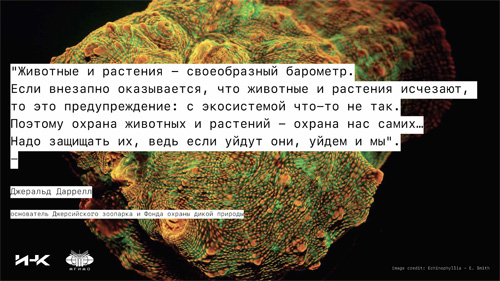Dataset “COVID-19 and the 2020 Crisis: Healthcare System Capabilities and Ramifications for the Economy and Business all Over the World”
Просмотров: 2129
COVID-19 has posed a serious threat for the mankind and demonstrated the consistency of processes of economic activity, having created the “dominoes effect”. In late 2019 - early 2020, only one country faced the new infection for which no cure was available at the time – it was China. However, in the context of strong interrelation and interdependence of participants of international economic relations, in as little as 2 months (by March 2020), COVID-19 has distributed to other countries across the world, which caused the pandemic. The events in the first trimester of 2020 are indicative of a high degree of integration of economic systems in the context of globalization, when the problems of a particular country become universal and require solving through joint efforts of the entire world community on the terms of mutual aid, mutual support and cooperation.
The posterior events in the second trimester of 2020 were representative of another aspect of the systemic effects of COVID-19, according to which the negative events in the health care system (pandemic, aggravated threat virus) have catalyzed the economic crisis, are generally referred to in international research papers as the COVID-19 crisis. Therefore, the fields of economic activity are interrelated, just like countries across the world. In order to achieve stability and sustainability of economic systems, it is necessary to achieve maintain equilibrium and balanced development of all fields of economic activity. While prioritization in accordance with the strategic benchmarks of economic development is justified and appropriate, the practices of financing socially significant sectors of the economy, which include health care, with whatever funds remain, given the persistent shortage of resources, are unacceptable and inappropriate.
The dataset of the Institute of Scientific Communications (ISC) aims to support the research on COVID-19 and the 2020 economic crisis, and to create the informational and empirical background for scientific evidence of their systemic interrelation. The dataset contains statistics that allow determining, first, the causes of differences in morbidity and mortality due to COVID-19 in countries across the world, and, second, ramifications of the COVID-19 crisis for the economy and business. The dataset contains up-to-date data for the second trimester of 2020, allowing for timely research based on relevant statistics. The dataset is intended to create a statistical framework in search for the comprehensive elimination of the pandemic and the economic crisis for the stabilization of the global economic situation and sustainable development of the international economy.
The dataset includes the following indicators (all higher indicator values are better, except those indicators for which there is a contrary provision):
The COVID-19 pandemic according to the World Health Organization and the World Health Map in the second trimester of 2020:
• COVID-19 incidence rate – the total number of cases of infection for the entire period of the pandemic (lower indicator value is better);
• The number of fatal cases due to COVID-19 – the total number of fatal cases for the entire period of the pandemic (lower indicator value is better);
• New cases of infection with COVID-19 for 1 day – the number of new cases (lower indicator value is better);
• Cases of recovery from COVID-19 for 1 day – the number of recovered patients;
• Cases of infection with COVID-19 per 1 million population – the number of cases per 1 million population (lower indicator value is better).
Measures to control the COVID-19 virus threat in the second trimester of 2020:
• Self-isolation index – activity in the streets of the cities all over the world; the data for the capital city have been presented. This indicator is calculated on a daily basis and is presented in Yandex.Maps. It represents the degree of achievement of the maximum level of activity that could be observed until the wide distribution of the COVID-19 (lower indicator value is better) in terms of percentage points;
• Coronavirus (COVID-19) Testing ( https://ourworldindata.org/coronavirus-testing#source-information-country-by-country, https://github.com/owid/covid-19-data/tree/master/public/data/testing ) – the total number of tests performed for the entire period of the pandemic. This indicator is calculated by the Our World in Data and updated daily;
• Population with household expenditures on health >25% of total household expenditure or incomer (%) . This indicator is calculated by the World Health Organization, is presented in the annual report “World Health Statistics 2020: monitoring health for the sustainable development goals” and shows the burden of public expenditures for medical services and medicines (lower indicator value is better);
• Average of 13 International Health Regulations core capacity score . This indicator is calculated by the World Health Organization, is presented in the annual report “World Health Statistics 2020: monitoring health for the sustainable development goals” and shows the average score of observance of the 13 main medical and sanitary regulations;
• Density of medical doctors (per 10 000 population) . This indicator is calculated by the World Health Organization and is presented in the annual report “World Health Statistics 2020: monitoring health for the sustainable development goals”;
• Density of nursing and midwifery personnel (per 10 000 population) . This indicator is calculated by the World Health Organization, is presented in the annual report “World Health Statistics 2020: monitoring health for the sustainable development goals” and shows the density of nursing and obstetric staff;
• Total net official development assistance to medical research and basic health sectors per capita (US$), by recipient country . This indicator is calculated by the World Health Organization, is presented in the annual report “World Health Statistics 2020: monitoring health for the sustainable development goals” and shows the net worth of the official financial assistance for the development of medical studies and the main health care sectors per capita (USD) by recipient countries;
• Age-standardized prevalence of obesity among adults (18+ years) (%) . This indicator is calculated by the World Health Organization, is presented in the annual report “World Health Statistics 2020: monitoring health for the sustainable development goals” and shows the prevalence of obesity among adults above 18 (lower indicator value is better).
Ramifications of the COVID-19 crisis for the economy and business in the second trimester of 2020 according to Statista:
• Value of COVID-19 fiscal stimulus packages in G20 countries as of May 2020, as a share of GDP . It shows the package of tax incentives for COVID-19 in G20 countries as of May 2020 as a percentage of GDP;
• Impact of coronavirus (COVID-19) on economic growth in the Asia Pacific region in 2020, by country . It shows the countrywise impact of coronavirus (COVID-19) on economic growth in the Asia Pacific region in 2020;
• Percentage of respondents worldwide who felt COVID-19 posed a high level of threat to their job or business as of March 14, 2020, by country . It shows the countrywise percentage of respondents throughout the world who felt that COVID-19 posed a high level of threat to their job or business as of March 14, 2020;
• Share of adults worldwide who agree business has a responsibility to ensure workers and the community are protected from COVID-19 in March 2020, by country . It shows the countrywise percentage of adults throughout the world who agree business has a responsibility to ensure workers and the community are protected from COVID-19 as of March 2020.
Benefits of the dataset provided by the ISC:
• Consistency and credibility: collection and systematization of basic statistical data in the common dataset, as well as data analysis with the use of the proprietary methodology for the calculation of the COVID-19 crisis index , which makes it possible to assess the situation in countries across the world and to make international comparisons;
• Topicality and representativeness: the dataset contains most recent available data (according to the results for the second trimester of 2020), which provide an opportunity to pursue research in a timely fashion and obtain consistent results;
• Reliability and objectiveness: the dataset combines statistics of reliable sources of statistical and expert analytical data on the subject, which include the World Health Organization, the World Health Map, Yandex.Maps, Our World in Data, and Statista;
• Informativity: the dataset presents up-to-date international statistics in Russian;
• Well-defined structure: in order to make working with the dataset more simple, fast and convenient for users, topic-based sections were distinguished in its structure;
• Availability of patterns: the dataset offers data patterns: integration patterns: G7 countries (developed countries) and BRICS countries (developing countries), CIS countries, EEU countries, geographic patterns of parts of the world, as well as patterns of susceptibility to the COVID-19 crisis , which enable accelerated selection of necessary data for economical experiments aimed at comparing countries of main categories in real-time mode;
• Data import: the dataset allows selecting necessary information and importing it to Microsoft Excel for the subsequent analysis;
• Interactivity: the dataset allows creating and visualizing the ratio between the epidemiological situation and the extent of efforts aimed at controlling COVID-19 in countries across the world with the presentation of their category;
• Intelligent assistance for research activities: the dataset provides an opportunity to perform automatic ranking according to the criterion of activity (as compared to the global practices) in terms of measures taken to control COVID-19 in countries across the world, as well as to visualize the results in the form of a polygon of factors of elimination of the pandemic for clarity;
• Ranking: the dataset was used as a basis for making the ranking of countries across the world from the perspective of their situation in the context of the COVID-19;
• Operation on a blockchain principle: first, the data as such are logically structured on a blockchain principle; second, the dataset allows sharing information, changing and processing it upon the request of users; the original data remain unchanged at that, which is very convenient and safe.
The data set was developed by Elena G. Popkova, D.Sc. Economics, Professor, President of the Institute of Scientific Communications










